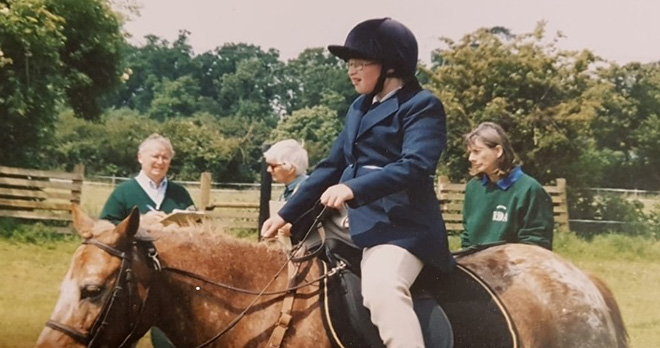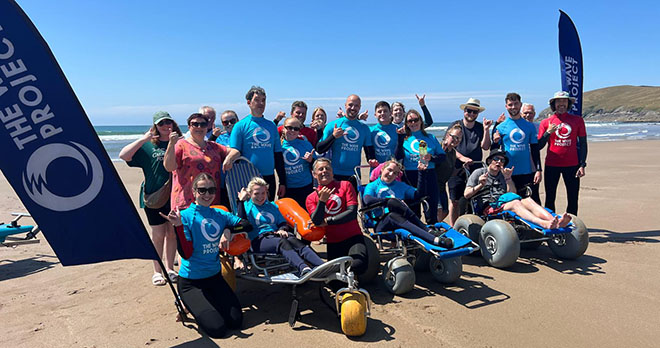What issues do children with cerebral palsy face when trying to gain access to mainstream education and EHC plans

Education is a fundamental human right. The better the access to a good education, the greater the chance of achieving potential and living a fulfilling life.
But it is not just access. Children need to be and feel included to support their physical, social and emotional development. For children with cerebral palsy, being included is more difficult than it is for other children. They can often be left out, which may be intentional or unintentional.
Many children with cerebral palsy do not get the learning support that they need either. Others may get too much focus from teachers, leading to other pupils resenting them for taking too much of the teacher’s attention. Either way, this can lead to isolation and exclusion, and an inadequate education.
For many children with cerebral palsy and their families, specialist schools are the most appropriate route for them whereas for others, mainstream schools with some additional support are preferable. Unfortunately though, it is often a struggle to get the support that the child needs regardless of the setting.
Below we will consider education, health and care (EHC) plans which were introduced as part of the Children and Families Act 2014 and can enable children with disabilities to receive the help and support they need in a school setting.
What is an ECHP?
An EHC Plan (EHCP) is for children and young people aged up to 25 who need more support than is available through special educational needs support, which a school must supply out of its own budget. An ECHP provides for extra funding from the local authority to meet the child’s needs.
EHC plans outline any special educational needs a child has, and the provision a local authority must put in place to help them.
An EHCP can also enable a child to take priority for admission to a mainstream school over other applicants, and it allows that child to be considered for schools where they are out of the catchment areas. It is usually vital to have an EHCP to gain entry to a special school.
An ECHP is a legally binding document which protects the support the child needs. If it states that a child needs one-to-one support in the classroom, then that must be provided. It covers a child up to the age of 25, so can also ensure support or a specialist placement at further education colleges.
How can an ECHP be obtained?
Parents are able to ask their local authority to carry out an assessment if they think their child needs an EHC plan. A young person aged 16-25 can request an assessment themselves.
Requests can also be made by anyone else who thinks an assessment may be necessary, including doctors, health visitors, teachers, parents and family friends. It is quite common for a school to start off the process for parents if they are supportive and knowledgeable about special needs.
If the school is not supportive or not in agreement with the need for an EHC plan the parents will have to take control of this process themselves which can seem quite daunting.
Rejection
As touched upon above, many first applications for assessment for EHC plans are unsuccessful. Reasons for local authorities refusing assessment have included: there being no formal diagnosis; there being no report from an educational psychologist and the fact that they state they will only assess children when they are a set number of years behind other children.
From a legal point of view the only criteria that have to be met for an EHC plan assessment is (i) that the child is suspected to have special needs, and (ii) that the child is suspected to need extra support in school.
If the local authority agrees to assess, the parents may be asked to provide documentation to assist in the assessment such as school reports, any doctors’ assessments and a letter from the parents setting out the child’s needs. The local authority should then produce a draft EHC plan that the parents will have an opportunity to comment on and request amendments if necessary.
Unfortunately it is commonplace for lots of families to be turned away and for an EHC plan to be refused. There is however a right to appeal and it has been shown that as many as 90% of families who appeal win their case.
The ECH Plan Document
A good EHC Plan should have an accurate and detailed description of the child/young person’s educational needs included in it and should be easy to understand for the parents, child and education providers.
It must have certain sections that are clearly labelled which are:
A: The views, interests and aspirations of the parent and the child.
This can include a description from the parents of the difficulties from which the child suffers and their health history, for example:
“Communication is the biggest challenge for X: Making himself understood, creating complex structures and dialogues are still developing and when people around him are not aware of the problem, they don’t always know how to deal with this. This can make X frustrated. Communication has impacted on his academic achievements and he is behind his peers at school.”
B: Special educational needs (SEN)
For example this could include “falling in the following areas: early learning skills; participation in learning; speech and language skills; social and emotional”
C: Health needs related to SEN
For example this could include referring to the nature of the injury and subsequent difficulties, and needs for therapies such as physiotherapy, speech and language therapy and occupational therapy.
D: Social care needs related to SEN
For example this could include the need for support to join in with activities outside of home and school.
E: Outcomes - how the extra help will benefit the child
The outcomes should describe what the child will be able to do as a result of getting the extra help in the EHC plan. Outcomes can be about reaching a particular educational level, or they can be things that are important to the child, such as being able to take part in an out of school activity.
F: Special educational provision (support)
This section must be specific and quantified. It should be very clear how much help, how often and who will give it. Therapies such as speech and language therapy must normally be in this section. It is should be clear exactly what is being provided, and, where appropriate, by whom and how often, to meet all the needs identified.
For example, it should not just say a child will have access to a speech and language programme, but should say if it includes direct speech and language therapy, and if so how often/how long for, as well as who will be reviewing and implementing the programme, and anything else the provision should include.
G: Health provision
For example medication, equipment such as a wheelchair, nursing support, monitoring seizures.
H: Social care provision
This might be short breaks, out of school activities or support for the family at home.
I: Placement - type and name of school or other institution
Parents can set out a preference for a certain school in an EHC plan and the local authority must comply with this unless it would be unsuitable for the child however in practice it is arguable as to how much choice parents really do have.
In considering the school the local authority will take into account the child’s age and ability. It will also consider whether “the child’s attendance there would be incompatible with the efficient education of others or the efficient use of resources”.
Unfortunately, in the current climate, the main consideration of local authorities does seem to be the cost so if an independent, specialist school is requested which will be costly to the local authority, the process is much more likely to involve a fight.
J: Personal budget arrangements
A personal budget is not extra money but a more flexible way of using the funding allocated to the child.
K: Advice and information
A list of the information gathered during the EHC needs assessment.
What issues are there with EHC plans?
Unfortunately, whilst designed to give better support for children with special educational needs, EHC plans are often inadequate. One child’s mother commented that she had not been confident that the local primary school were properly pursuing the objectives set out in the plan, and she felt that the targets written in it are too open-ended.
It is also no secret that local authorities are struggling to keep up with the demand for EHC plans and the strict timescales associated with them. However, it has recently transpired that some local authorities are in fact outsourcing the production of these plans to external companies. This is worrying for a number of reasons, including the fact that there is a lack of knowledge and understanding of the individual person and their needs, and they will never have met them which could potentially give rise to more inaccuracies.
Some frequently highlighted problems with EHC plans have included:
- being too brief with not enough information e.g. too brief a description regarding the child’s special educational needs which has an impact on the provision that is included to meet this;
- not being specific enough e.g. no specification as to how much teaching assistant provision should be made. The type, number of hours, frequency of support and level of expertise should all be included in relation to this;
- parts being missed out, e.g. the health and social care points not being included;
- plans being drawn up incorrectly including information in the wrong sections such as educational needs in the health needs section;
- speech and language therapy not being included as an educational need in accordance with a court decision, but instead being included as a health need.
How to appeal an inadequate EHC plan, or when one is rejected
If plans are drawn up correctly parents are given a better level of legal protection to appeal the provision, or challenge it if it is not provided. It is therefore imperative that the plan is accurate.
It is often recommended that parents seek legal advice once a plan has been received so they can get specific advice and assistance regarding any changes or appeals that need to be made.
If negotiations are unsuccessful, then an appeal to the tribunal would be required. That can prove costly to include instruction of solicitors specialising in education law, instruction of experts to include giving evidence at a tribunal hearing, and instruction of counsel and could be in the region of £25-35k. This is obviously prohibitively costly for most people.
EHC plans can be a great thing to enable a child’s needs to be fully documented and for the right support to be obtained. In reality however there are many hurdles that can be encountered when obtaining an EHC plan which can seem insurmountable to parents who may already have a considerable amount to deal with in caring for their disabled child.

More information on support for education & work
Find out more about the support available to children with cerebral palsy in education and work.
Our birth injury team have pulled together a comprehensive guide to the support available to children with cerebral palsy, including guidance on support for education and work.
Contact our medical negligence enquiries team today, to find out more about your legal options when your child has experienced medical negligence.
Call now






